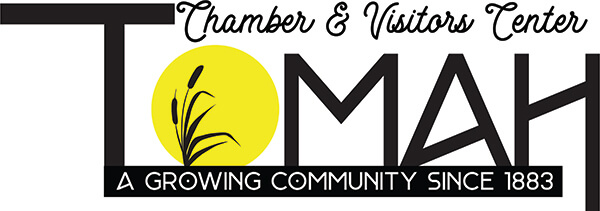Digital-First, Booth-Ready: Winning the New Event Marketing Game
Trade shows aren’t dead. But they’ve evolved—and those who haven’t kept up are hemorrhaging attention, leads, and post-event traction. In-person connection still converts, but digital fluency is the differentiator. The modern exhibitor’s toolkit isn’t just a banner and a badge scanner—it’s a real-time signal machine. To maximize return on trade show investments, businesses must treat events not as isolated happenings but as digitally-extended ecosystems—strategic touchpoints before, during, and after.
Lay the Groundwork Before the Doors Open
If you’re waiting until the week of the show to activate your audience, you’re too late. Smart event marketers start early—not with blind blasts, but with sequenced, role-aware campaigns. The goal isn’t just registration—it’s priming. You want attendees to walk in already knowing your name, your angle, your edge. That kind of anticipation doesn’t happen on its own. You need structure, timing, and tools that stretch your presence beyond the venue. Think of it as weeks-ahead digital campaign orchestration, where targeted content, personalized invites, and retargeting loops work together to warm the room before you even arrive. This approach builds awareness in phases—teasing, confirming, and reinforcing—so by the time badges print, the audience is already leaning in.
Reimagine the Booth as a Digital Interface
Most booths still rely on tired tactics: fishbowls, flyers, awkward pitches. But in 2025, the booth is a real-time experience node. It listens. It adapts. It gives back. That starts with the right tools. QR-triggered microsites that show different content based on the user’s role. Video loops controlled by sensors. Badge scans linked to CRM nudges. Smart booths blend physical presence with digital interaction. It’s not just flashy—it’s efficient. This isn’t theory. Exhibitors using touchscreen kiosks and lead apps are capturing cleaner data, shortening sales cycles, and giving attendees something to remember and revisit after they leave. These tools aren’t optional anymore. They’re the connective tissue between presence and pipeline.
Use AI to Amplify Creative, Not Replace It
Speed and scale matter—but not at the expense of clarity. Many teams choke at the design stage: last-minute banner updates, mismatched slide decks, poorly sized social graphics. It’s not a talent gap—it’s a time gap. The solution? Tools that move fast and think visually. Exhibitors using AI design tools aren’t just keeping pace—they’re setting it. Under deadline pressure, they’re generating branded booth backdrops, real-time social carousels, even swag mockups in minutes—not days. The difference isn’t magic. It’s leverage. For example, AI helps designers and non-designers alike rapidly generate booth signage, visual concepts, and show-day content. To see how it works in action, click here.
Close the Loop While the Signal’s Still Warm
Once the last hand’s been shaken and the lights dim, most brands drop the ball. They rest. They “circle back next week.” But momentum decays fast, and your best window for follow-up is often under 48 hours. Here’s where automation and segmentation pay off. If you’ve set up real-time lead routing, you can trigger instant sequences—emails that reference specific booth conversations, offers based on buyer stage, even event recap content that packages your pitch in a narrative attendees can forward to decision-makers. The sharpest teams are seeing real gains from smart email marketing doubling ROI through personalized workflows built around booth engagement data. This isn’t just about speed. It’s about precision. Trade shows generate noise—your follow-up turns it into signal.
Efficiency Is the New Luxury
Budgets are tighter. Attendee expectations are higher. And operations teams are being asked to do more with less. That means the backend of event marketing matters just as much as the front. Teams are leaning into automation, logistics AI, and footprint tracking—not just for ease, but for ethics. Brands with sustainability goals are using digital overlays to avoid print waste, measuring their emissions, and offering hybrid or asynchronous options that reduce travel dependency. Tools that manage energy, not just engagement, are becoming the norm. Companies are implementing AI tools to reduce their carbon footprints by automating logistics, digitizing deliverables, and replacing disposable collateral with trackable digital equivalents.
Think Like a Touchpoint Strategist, Not a Vendor
Trade shows are no longer just lead factories. They’re layered moments in a longer relationship arc. Every channel—booth, email, signage, ad, handout—either adds to the story or fragments it. The most effective teams are treating the event as a convergence zone, not a sales pit. To do that, you have to orchestrate—not just show up. Every tool you choose, every message you send, every asset you deploy should reinforce the same throughline. Clarity becomes compound. Brands that are winning at this are optimizing every attendee touchpoint across the full attendee journey—from RSVP to follow-up call—not just the booth walk-in. It’s choreography, not chaos. And that’s what makes it memorable.
Trade shows aren’t static anymore. They’re dynamic, distributed, and digitally amplified. The brands that win aren’t the loudest—they’re the clearest. They understand timing. They integrate tools. They respect attention. And they move fast, across channels, with rhythm and recall. Digital tools don’t replace presence. They enhance it. And when used with purpose—before, during, and after—they turn a booth into a beacon. Not just for the people in the room, but for every algorithm, inbox, and feed that attendee touches next.


